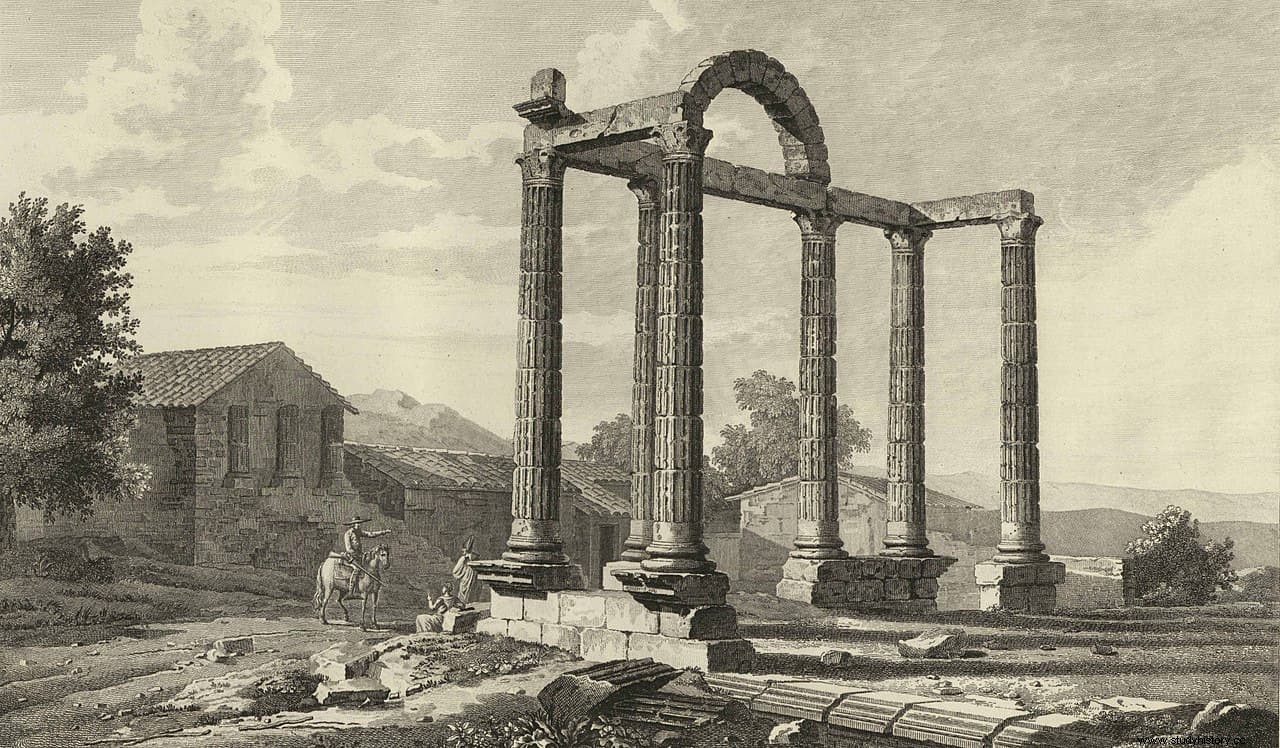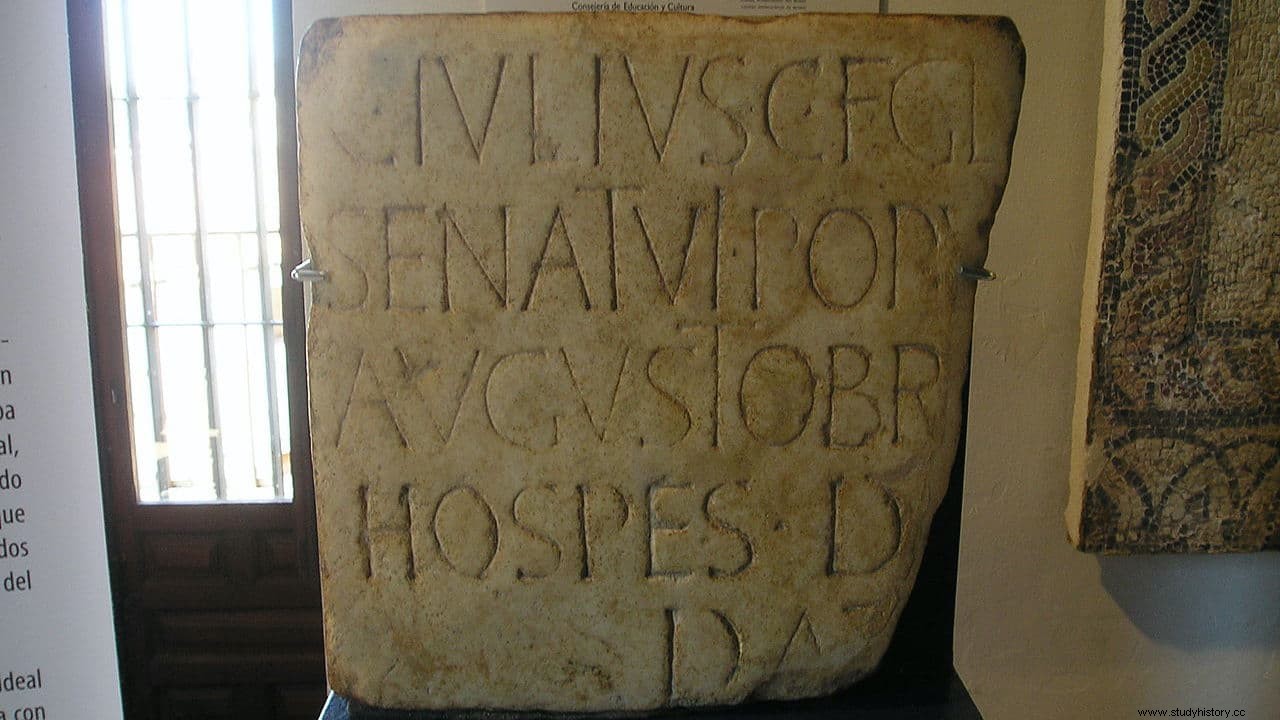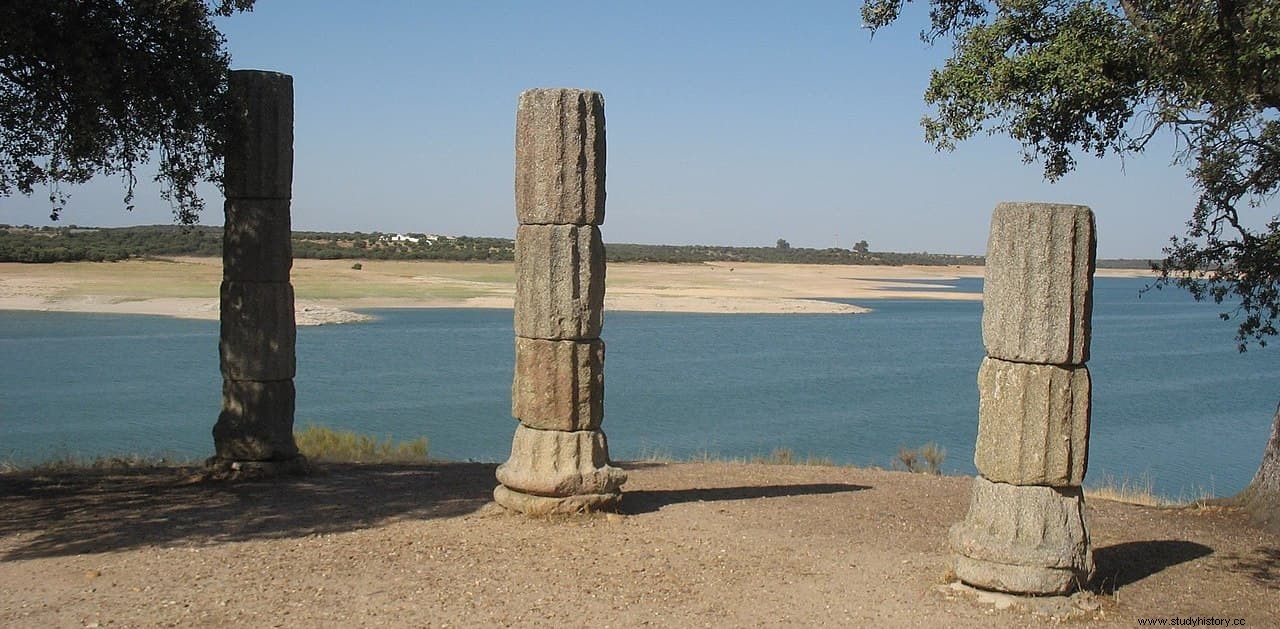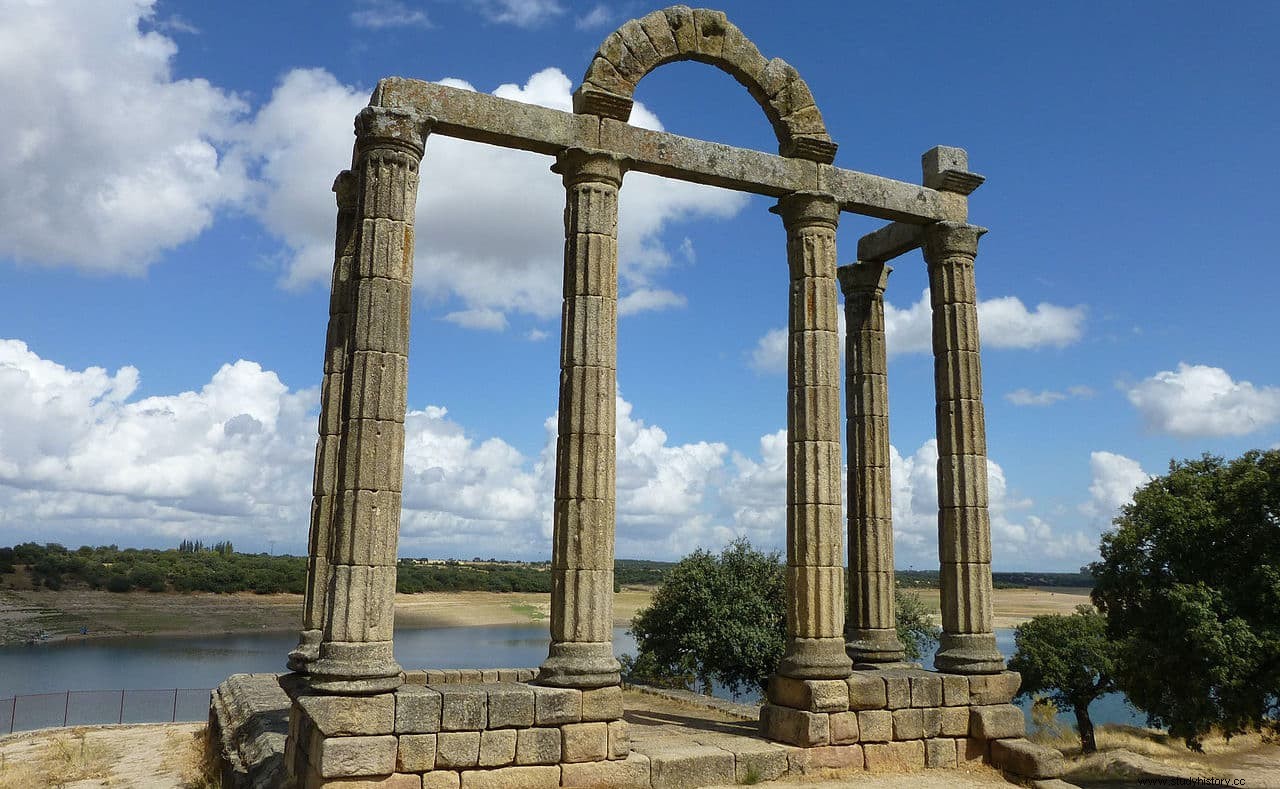A curia was one of the subdivisions of the people in ancient Rome, and by extension the place where the Senate met to discuss their affairs was also called that. The best example is, of course, the Curia Hostilia in Rome, built in the Forum according to tradition by the third king of Rome, Tulio Hostilio, and whose remains are today under the church of Saints Lucas and Martina.
In the forum remains the example of the Curia Julia, which has survived to this day with numerous reforms, the third to play that role, whose construction was started by Julius Caesar and completed by Augustus. The portico supported by columns that it presented in the front area of the building did not survive from its original invoice, and which is known from a representation of the Curia on a denarius from 28 BC. of Emperor Augustus.

But curiously, there is no curia portico left standing in the entire ancient Roman world (and every city had a curia, at least the municipium and the colonies ) except one:the portico of the curia of Augustóbriga in Hispania. And this one is a miracle.
Augustóbriga was a municipium , the second highest class of Roman city, which was located on the banks of the Tagus River and to the east of the current province of Cáceres. It was located on the road that went from Emerita Augusta (Mérida) to Caesarobriga (Talavera de la Reina) and was one of the ancient settlements of the Vettones, Romanized from the 1st century BC.
In the year 74 AD Vespasian granted it citizenship, along with the rest of Hispania, and it became a municipium , reaching its maximum urban development during the 2nd century AD, at the time of Trajan.

The city, which should not be confused with the other Augustóbriga in Soria, was identified at the end of the 19th century, when an inscription from the beginning of the 1st century AD was found in Talavera la Vieja. dedicated to Gaius Julius Glabro by the Senate and the people of Augustóbriga (senatui populoque augustobrigensi ).
The Roman ruins of Talavera la Vieja had already been inventoried and cataloged by Ambrosio de Morales in 1577, and in 1931 they were declared a Historic-Artistic Monument. However, archaeological excavations were never carried out, not even on the occasion of the appearance of the inscription, until 1962.

And it is that the following year Talavera la Vieja and the ruins of Augustóbriga were going to be submerged under the waters of the Valdecañas reservoir. The residents were relocated to newly created towns, and some old structures were dismantled stone by stone and rebuilt on the banks. Among them are the remains of a temple (mainly columns), and the porch of the curia, which thus became the only one that has survived to this day.
The portico, popularly known as the marbles , can be seen today about 6 and a half kilometers from its original location, next to the road that goes from Navalmoral de la Mata to Guadalupe, in the municipality of Bohonal de Ibor. It is made of granite, and dates from the 2nd century AD. At first glance it would seem that it is a small tetrastyle temple, and indeed that is the scheme that follows.

The six fluted columns with Corinthian capitals, with the complete podium, the architrave and the central arch, as well as the plinth of the building, which is 20.43 meters long by 11.55 meters wide and the pavement of slabs, are preserved. , having disappeared its walls and roof.
In Augustóbriga, before being flooded, up to 31 Roman inscriptions were found. Other remains could not be rescued in time and were submerged forever, such as the mosaic in the hot springs building. Only on occasions, when the level of the reservoir drops in summer or drought, can the remains of Talavera la Vieja be seen, still surely hiding ancient treasures under its stones.
